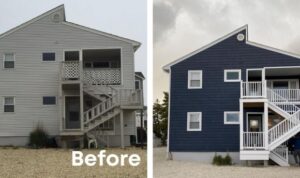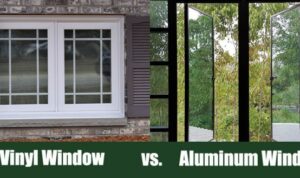Embark on a journey into the world of architectural interior design, where functionality meets aesthetics in a harmonious blend. Discover the art of creating captivating spaces that not only look stunning but also enhance our daily experiences.
Delve deeper into the principles, spatial planning, furniture selection, and sustainable practices that shape modern architectural interior design.
Introduction to Architectural Interior Design
Architectural interior design involves the planning, designing, and execution of interior spaces within buildings. It focuses on creating functional, efficient, and aesthetically pleasing environments that enhance the quality of life for occupants.
Architectural interior design goes beyond mere decoration, as it considers the structural elements of a space, such as layout, lighting, acoustics, and materials, to create spaces that are not only visually appealing but also practical and comfortable to use.
Significance of Architectural Interior Design
Architectural interior design plays a crucial role in shaping the way we experience and interact with the built environment. By carefully considering the needs and preferences of users, designers can create spaces that support well-being, productivity, and overall satisfaction.
Key Elements of Architectural Interior Design
- Space Planning: The strategic arrangement of furniture, fixtures, and circulation paths to optimize functionality and flow within a space.
- Material Selection: Choosing appropriate materials based on durability, aesthetics, and sustainability to enhance the overall design concept.
- Lighting Design: Utilizing natural and artificial lighting to create ambiance, highlight architectural features, and improve visual comfort.
- Color Palette: Selecting colors that evoke specific moods, enhance spatial perception, and harmonize with the overall design scheme.
- Environmental Considerations: Integrating sustainable practices and technologies to promote health, energy efficiency, and environmental responsibility.
Principles of Architectural Interior Design

Interior design is not just about making a space visually appealing; it also involves applying various principles to create spaces that are functional, comfortable, and aesthetically pleasing. Let's explore some key principles that guide architectural interior design.
Balance
Balance in interior design refers to the distribution of visual weight in a space. It can be achieved through symmetrical, asymmetrical, or radial balance. For example, placing two identical chairs on either side of a fireplace creates symmetrical balance, while asymmetrical balance can be achieved by placing a larger piece of furniture next to several smaller ones.
Scale and Proportion
Scale deals with the size of elements in relation to each other and the space as a whole, while proportion relates to how these elements are harmoniously scaled to create a cohesive look. For instance, oversized furniture in a small room can make the space feel cramped, highlighting the importance of proper scale and proportion.
Rhythm
Rhythm in interior design involves creating a sense of movement and visual flow throughout a space. This can be achieved through repetition, progression, or contrast of elements. For example, using a repeated pattern in textiles or decor items can create a rhythmic feel in a room.
Harmony
Harmony is about ensuring all elements in a space work together cohesively to create a unified and pleasing environment. This can be achieved through color schemes, materials, and styles that complement each other. A harmonious space feels well put together and inviting.
Emphasis
Emphasis is about creating a focal point or feature in a space that draws attention and anchors the design. This can be achieved through a statement piece of furniture, an accent wall, or a unique lighting fixture. Emphasis helps create visual interest and adds personality to a room.
Importance of Lighting, Color, Texture, and Materials
Lighting, color, texture, and materials play crucial roles in architectural interior design. Proper lighting can enhance the mood and functionality of a space, while color choices can impact the overall feel and style. Texture and materials add depth and richness to a design, creating tactile and visual interest for a more dynamic space.
Spatial Planning and Layout

Spatial planning plays a crucial role in architectural interior design as it determines how a space will be utilized and navigated. By carefully considering the layout, designers can enhance functionality and create a seamless flow within a space.
Open Plan Layout
An open plan layout removes physical barriers between different areas, creating a sense of spaciousness and connectivity
Zoning Strategy
Zoning involves dividing a space into different functional zones based on activities or functions. This strategy helps in organizing the space efficiently, ensuring each area serves its designated purpose effectively. For example, a living room may be zoned into a seating area, entertainment zone, and reading nook.
Circulation Patterns
Circulation patterns refer to the pathways and routes within a space that facilitate movement. Designers need to consider the flow of traffic and ensure that circulation paths are clear and intuitive. By strategically placing furniture and architectural elements, designers can guide people through the space effortlessly.
Optimizing Space Utilization
To optimize space utilization, designers can use multifunctional furniture, built-in storage solutions, and clever spatial configurations. By maximizing every square foot available, designers can create versatile and adaptable spaces that meet the diverse needs of the occupants.
Furniture and Fixture Selection
When it comes to architectural interior design projects, selecting the right furniture and fixtures is crucial in creating a cohesive and functional space that reflects the desired aesthetic. The choice of furniture and fixtures can greatly impact the overall look, feel, and functionality of a room.
Considerations in Furniture and Fixture Selection
- Functionality: Consider how the furniture and fixtures will be used in the space. Ensure that they serve a practical purpose while also enhancing the overall design.
- Style and Aesthetics: Choose pieces that complement the design style of the space. Whether it's modern, traditional, or eclectic, the furniture should blend seamlessly with the overall theme.
- Scale and Proportion: Pay attention to the size of the furniture in relation to the room. Oversized pieces can overwhelm a space, while undersized pieces may look out of place.
- Quality and Durability: Invest in high-quality furniture and fixtures that will stand the test of time. Quality pieces not only look better but also last longer.
- Material and Texture: Consider the materials and textures of the furniture and fixtures. Mixing different materials can add depth and visual interest to the space.
Impact of Furniture Arrangement
The arrangement of furniture can significantly impact the flow and functionality of a space. Proper furniture placement can create designated areas for different activities, improve circulation, and enhance the overall comfort of the room.
Trends in Furniture Design
- Minimalism: Clean lines, simple shapes, and neutral colors are characteristic of minimalist furniture design, creating a sense of openness and tranquility.
- Sustainable Materials: With a focus on environmental consciousness, furniture designers are increasingly using sustainable materials like reclaimed wood, bamboo, and recycled metals.
- Multi-functional Pieces: In smaller spaces, multi-functional furniture pieces such as sofa beds, storage ottomans, and extendable dining tables are becoming increasingly popular.
- Mixing Styles: Mixing different furniture styles, such as combining vintage pieces with modern ones, adds a unique and eclectic touch to interior design.
Sustainable Design Practices
Integrating sustainable design practices in architectural interior design is crucial in today's world to reduce environmental impact and promote a healthier living environment. By implementing eco-friendly materials, energy-efficient systems, and obtaining green building certifications, designers can create spaces that are both visually appealing and environmentally responsible.
Use of Eco-Friendly Materials
Using eco-friendly materials such as reclaimed wood, bamboo, cork, and recycled glass can significantly reduce the carbon footprint of a project. These materials not only look stylish but also contribute to a more sustainable design approach.
Energy-Efficient Systems
Incorporating energy-efficient systems like LED lighting, smart thermostats, and solar panels can help reduce energy consumption and lower utility costs. These systems not only benefit the environment but also create a more comfortable and efficient interior space for occupants.
Green Building Certifications
Obtaining green building certifications such as LEED (Leadership in Energy and Environmental Design) or BREEAM (Building Research Establishment Environmental Assessment Method) showcases a commitment to sustainable design practices. These certifications ensure that a project meets stringent environmental standards and promotes a healthier indoor environment.
Examples of Innovative Solutions
- Utilizing biophilic design principles to bring nature indoors, improving air quality and overall well-being.
- Installing green walls or vertical gardens to enhance aesthetics and reduce carbon dioxide levels.
- Incorporating passive design strategies like natural ventilation and daylighting to reduce energy consumption.
Conclusive Thoughts
In conclusion, architectural interior design is more than just decorating rooms; it's about transforming spaces into living works of art that elevate our quality of life. Explore the endless possibilities this field offers and unleash your creativity in designing spaces that truly inspire.
Clarifying Questions
What sets architectural interior design apart from interior decoration?
Architectural interior design focuses on the structural elements of a space, such as layout, spatial planning, and functionality, while interior decoration is more about aesthetics and surface-level enhancements.
How does lighting impact architectural interior design?
Lighting plays a crucial role in setting the mood, highlighting design elements, and enhancing the overall ambiance of a space in architectural interior design.
Why is sustainable design important in architectural interior design?
Sustainable design promotes environmental responsibility, energy efficiency, and healthier living environments, making it a key consideration in modern architectural interior design.






